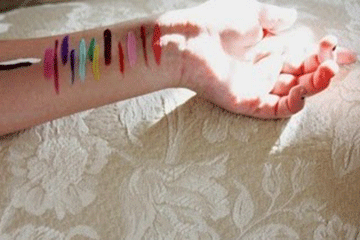
02/26/2019
Janis Whitlock, associate director of Cornell University’s Bronfenbreanner Center for Translational Research, will address how current youth use self-injury to speak and how it serves as a cultural emblem of the age, on Wednesday, March 13.
“For many contemporary youth, the body serves as a canvas for self-expression,” said Whitlock.
Her discussion, which begins at 4:30 p.m. in Moffett Center, Room 2125, is titled “My Blood in Between Heaven and Earth: Self-injury and the Embodied Language of Pain, Power and Vulnerability.”
“It can speak what the voice cannot,” Whitlock said. “It can remind the wearer of their connection to both the ethereal and the embodied, of their resistance and their hope.”
A reception to welcome her will precede the lecture across the hall at 4 p.m. in the Rozanne M. Brooks Museum, Moffett Center, Room 2126.
The talk continues the College’s 2018-19 Rozanne M. Brooks Lecture Series on the theme of “The Culture of Death,” which explores the anxieties felt in some cultures, contextualizing them in the 21st century Western experience. The series events are free and open to the public.
Whitlock’s research indicates that self-inflicted injury, or intentionally hurting the body, can be used to sustain life or to end life, to represent hope or hopelessness.
A lecturer in Cornell’s Department of Human Development and Cornell Institute of Public Affairs, she has a doctorate in human development from Cornell University.
This talk is preceded by a Brooks Lecture on Wednesday, Feb. 27, titled “Scared to Death? Changes in College Students’ Fear and Anxiety in Wilderness Environments Over Time.”
The final Brooks series lecture will follow on Wednesday, April 3. A Spanish language and culture specialist from University at Albany will give a talk on “Newfangled Vampires and Zombies in Latin American Literature and Film.” Carmen Serrano, an assistant professor of Spanish, has studied how vampire and zombie figures have inspired Latin American films since the 1950s.
The “Culture of Death” series talks about how various cultures view the end of life. Although inevitable and therefore of interest to all humans, cultures view death differently, many as the doorway to another, sometimes better, existence. In the West however, dying is viewed more often as something to be feared and avoided as long as possible.
The 2018-19 Brooks Lecture Series is sponsored by a grant from Auxiliary Services Corporation (ASC) and the Cortland College Foundation. For more information, contact Brooks Museum director Sharon Steadman, a SUNY Cortland professor of sociology/anthropology, at 607-753-2308.